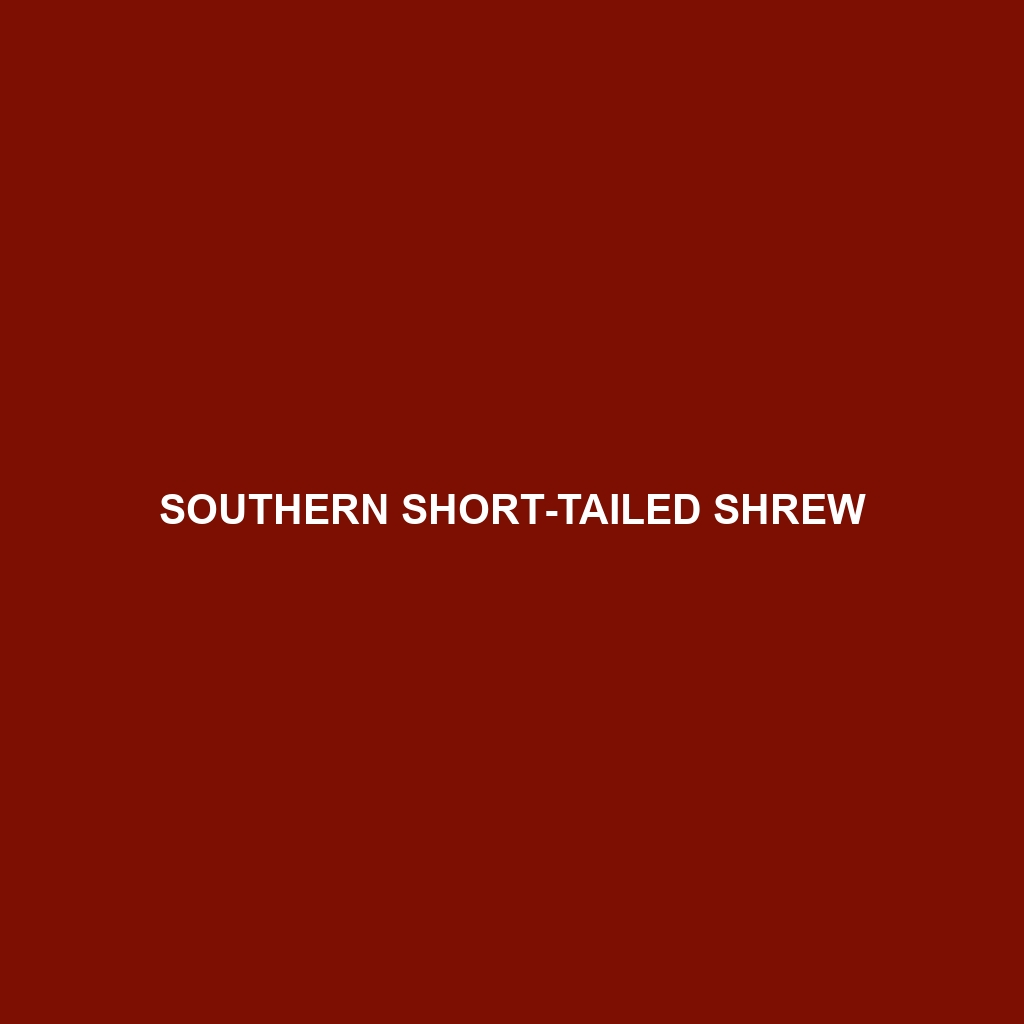Southern Short-tailed Shrew: A Comprehensive Overview
Common Name: Southern Short-tailed Shrew
Scientific Name: Blarina carolinensis
Habitat
The Southern Short-tailed Shrew is primarily found in the eastern United States, ranging from the Midwest to the southeastern regions. These small mammals thrive in a variety of environments, including forests, grasslands, and wetlands. They prefer moist, rich soil areas that provide ample leaf litter and organic matter for burrowing and foraging.
Physical Characteristics
The Southern Short-tailed Shrew is a small mammal, typically measuring between 3.5 to 5.1 inches in length, with a tail that accounts for roughly one-third of its body size. Its fur is dense and velvety, colored a rich dark gray to brown. Notable features include a short, stout body; a pointed snout; and small, hidden eyes, which contribute to its distinctive appearance.
Behavior
These shrews are primarily nocturnal, showcasing a range of interesting behaviors. They are known for their agility and can move quickly through their environments. The Southern Short-tailed Shrew is also known for its territorial nature, often marked by scent glands, and can be quite aggressive when feeling threatened. Their ability to produce ultrasonic sounds facilitates communication with other shrews.
Diet
The diet of the Southern Short-tailed Shrew mainly consists of insects, earthworms, and small vertebrates, making them carnivorous feeders. They are also known to consume the roots and tubers of some plants. This species has a high metabolism, requiring them to eat frequently – sometimes consuming their weight in food daily, which is a significant characteristic in shrew feeding habits.
Reproduction
Southern Short-tailed Shrews breed during the spring and summer months, typically from March to August. After a gestation period of about 28 to 32 days, females give birth to litters ranging from three to ten offspring. The young are born blind and hairless and develop rapidly, starting to explore their environment within a few weeks of birth.
Conservation Status
Currently, the Southern Short-tailed Shrew is classified as of least concern by the IUCN Red List, indicating that it is not under immediate threat. However, habitat destruction and environmental changes can potentially impact some local populations, emphasizing the importance of ongoing conservation efforts.
Interesting Facts
One fascinating aspect of the Southern Short-tailed Shrew is its venomous saliva, which can immobilize its prey. Unlike most shrew species, this characteristic allows them to hunt larger animals, showcasing their unique role in the food chain.
Role in Ecosystem
The Southern Short-tailed Shrew plays a crucial role in its ecosystem as both a predator and prey. They help to control insect and small vertebrate populations, contributing to the balance of their environment. Moreover, as a food source for larger predators, they are integral to the food web, highlighting their importance in maintaining ecological harmony.
